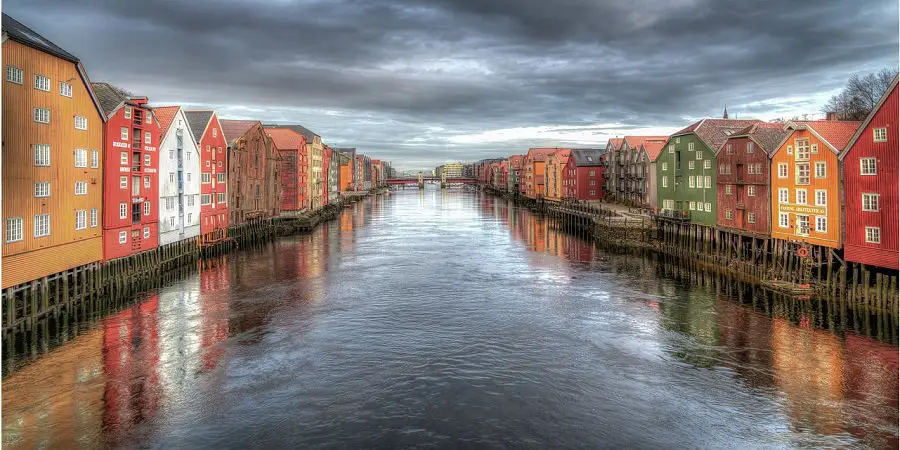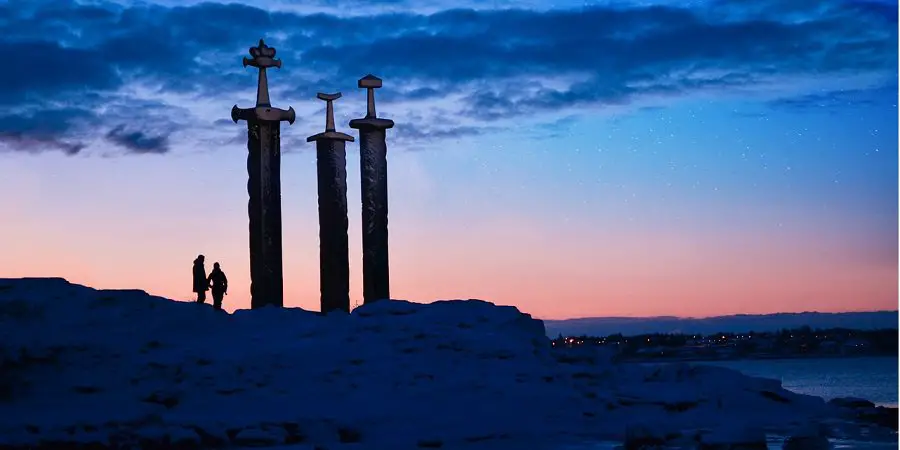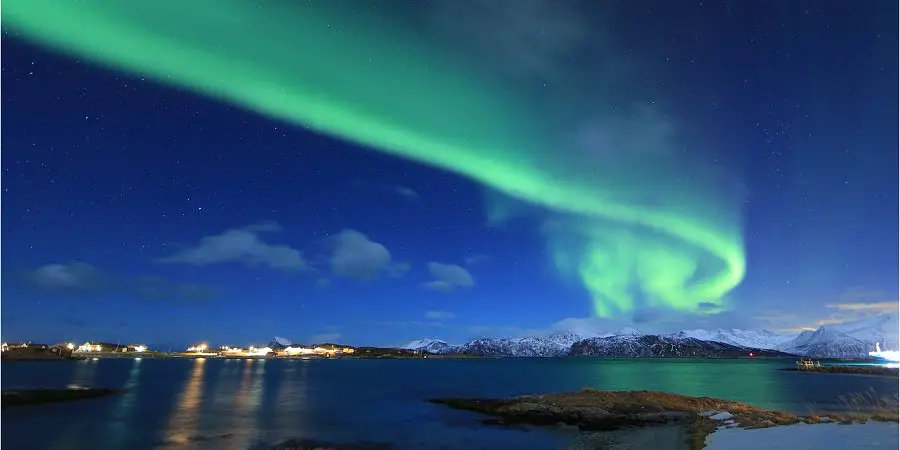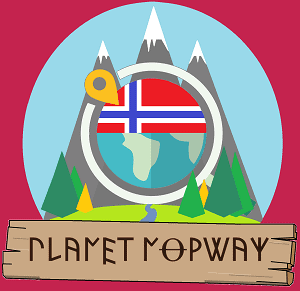Norway has rich access to good water sources. Most Norwegians have access to good quality drinking water from their waterworks. The tap water in Norway is recognized as some of the highest quality tap water in the world. Needless to say, it is perfectly safe to drink.
The quality of the drinking water in Norway is maintained by appropriate regulations of waterworks and oversight by governing bodies. This includes the Norwegian Food Safety Authority and the National Institute of Public Health.
Oslo, and other major cities including Bergen, Trondheim, Stavanger, and Tromsø, have access to clean drinking. The water is constantly monitored to ensure it meets strict quality standards.

Is Norwegian tap water safe to drink?
Norway has one of the best quality drinking water in the world. The infrastructure is well-regulated and has been a focus area in recent years. This has contributed significantly to the water quality.
From its 2019 survey, the Norwegian Institute of public health could report that 98% of the roughly 890 million cubic meters of water delivered to end-users were of satisfactory hygienic quality.
Despite the pleasing results. The institute pointed out the importance of maintaining and improving the infrastructure. It is estimated that as much as 28% of the drinking water produced was lost due to leakages in the piping system. It was also pointed out that fractures in the piping increase the risk of contamination.
The supply of drinking water in Norway
Norway has plenty of freshwater sources throughout the country. There are over 1400 systems supplying drinking water to the Norwegian population through a piping system stretching about 53 000 km.
How the Norwegian water supply is governed
The Norwegian Ministry of Health and Social Services has the overall responsibility for the regulations concerning the water supply and drinking water.
The ministry delegates different tasks to the Norwegian Food Safety Authority and the National Institute of Public Health, Both governed by the ministry.
The Food Safety Authority is responsible for approval, supervision, and emergency preparedness. The National Institute of Public Health is responsible for performing various supporting tasks. This includes maintaining the register of waterworks and analyzing water quality. It also acts as a consultant to the food safety authority with regards to water safety.
Tap water in Oslo

90% of Oslo’s population receives their tap water from Maridalsvannet, a lake just to the north of the city. From here, water is transferred to 2 water treatment plants before being distributed to end-users via reservoirs.
Measurements of everything from heavy metals and bacteria are carried out weekly or quarterly. This ensures that Oslo is provided with quality drinking water. In its 2020 Report, Oslo county could report that the water supplied met all quality standards.
Occasional unsatisfactory levels of certain bacteria or parasites are rapidly detected. In such cases, the local government notifies businesses and individuals in affected districts. Usually, it’s recommended to boil the tap water before use for a few days until the issue resolves.
Oslo is one of Europe’s fastest-growing cities. While the current infrastructure is enough to supply the growing city. There is no reserve supply in case of catastrophic failure.
Because of this, it has been decided to build out reserve infrastructure. When complete water can be supplied from Holdfjorden, located in the neighboring county, Viken. The project is projected to be completed in 2028
Tap water in Bergen

97% of Bergen’s inhabitants are supplied with water from Bergen Waterworks. The sources are 5 lakes that lie outside the city. These are Jordalsvatnet, Svartediket, Kismul, and Espeland.
All 5 sources are equipped with hygienic barriers before supplying water to a central system. This feeds water to inhabitants of the 5 different districts throughout the city. Besides the 5 main sources and facilities, 4 smaller reserve sources can be added to the system if needed.
Tap water in Trondheim

Trondheim municipality claims to have exceptionally good drinking water quality. The water is sourced from jonsvatnet, a lake located just southeast of the city. The quality of the water is monitored constantly with weekly control samples obtained from 24 separate locations across the lake.
Based on the analysis of contaminants and harmful substances sampled in 2020. The drinking water from jonsvatnet showed results well within acceptable limits. In addition to Jonsvatnet, the city has a reserve source in lake Benna located further south.
Tap water in Stavanger

The municipality of Stavanger has partnered with surrounding municipalities to create a common provider of water, sewage, and waste management. This company goes by the abbreviation IVAR.
IVAR sources the drinking water primarily from Romsvatn/stølsvatn and Storavatnet. 2 lakes in Gjesdal municipality, located just southeast of Stavanger. Also, the company can use other reserve sources if needed.
The sourced water is then processed at one of 3 processing plants. It is then delivered to end customers directly, or via reservoirs. The water quality is great and the company ensures that it stays that way through continuous monitoring and testing to make sure the water meets its strict quality standards.
Tap water in Tromsø

If you travel north to see the northern lights, you are likely to be staying in tromsø. Here you will end up enjoying the local drinking water. It’s sourced from a lake on ringvassøya, located just north of the city, and a collection of 3 lakes located on kalvøya, just to the northwest of the city.
The water is processed at 2 treatment facilities before being delivered to end-users directly or via reservoirs. The water quality is monitored routinely to ensure it complies with regulations determined by the Norwegian Food Safety Authority.
Currently, the drinking water in Tromsø complies with all regulations. It also gets good remarks for its safety and quality by Norsk Vann, a national interest organization for the water industry in Norway.
Can you drink water in nature in Norway?
It is very common to drink unfiltered water from nature in Norway. While the water is most often very clean and free from disease, especially in mountainous areas, there is no guarantee that it’s free from contaminants.
The most common potential contaminant is bacteria. Mainly campylobacter, which causes diarrhea, and a bacteria causing rabbit fever. These usually contaminate the water through feces from birds, wild animals, and domestic animals on open pastures.
Because tap water is very clean and readily available in Norway. It’s advised to bring tap water from home when hiking. If you run out or want to have a complete wilderness experience, make sure to consider the recommendations from the Norwegian institute of public health. This can help reduce the chance of ingesting contaminated water;
- Make sure the water is clear and without a distinct taste or odor.
- Choose running water from streams and creeks over stagnant water from lakes and ponds.
- Avoid water that is nearby farmland.
- Avoid water if there is feces from animals or dead animals nearby.

